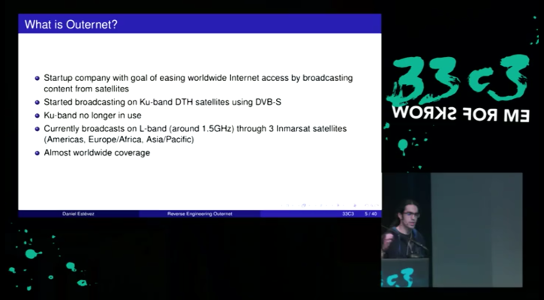Back in 2016, I became interested in Othernet‘s satellite filecasting service, which back then was called Outernet. Outernet was a start up company that offered a free global satellite service with which some internet contents such as weather updates or Wikipedia pages were broadcast. The main goal of the company was making this content available in developing countries, remote locations, and in general, in places that couldn’t afford an internet connection. Outernet started being popular with Amateur radio operators, hobbyists and makers, who saw it as an interesting project to set up at home for fun.
Most of the Outernet’s software stack was open source, and their receivers were some kind of embedded Linux system. However, the key parts of the receiver, which were the demodulator and the implementation of the filecasting protocol, were closed source and the protocols and specs they used were not documented publicly. Unhappy with this, I wrote in their forums asking if these software pieces could be open sourced. After receiving a negative reply, I decided to try to reverse-engineer all this, with the goal of writing some documentation and producing an open-source alternative implementation.
